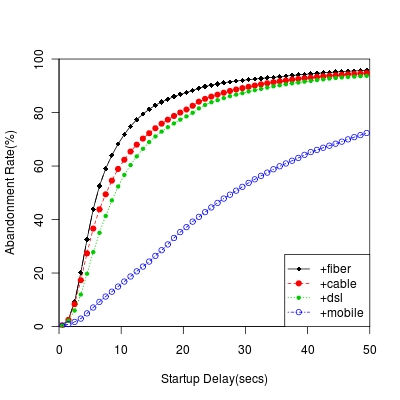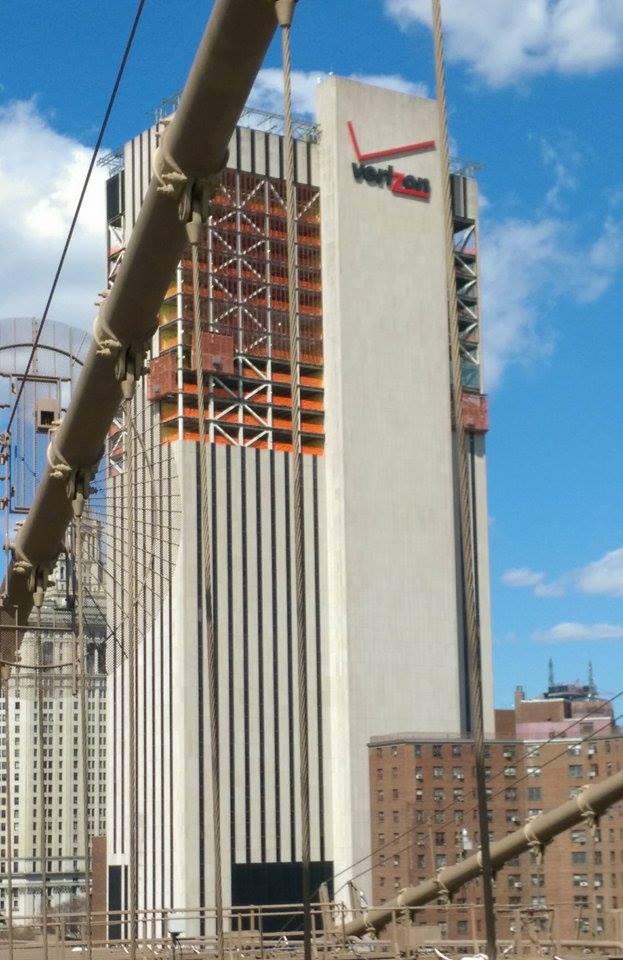|
NYC Mesh
NYC Mesh is a physical network of interconnected routers and a group of enthusiasts working to support the expansion of the project as a freely accessible, open, wireless community network. NYC Mesh is not an internet service provider (ISP), although it does connect to the internet and offer internet access as a service to members. The network includes over 1,000 active member nodes throughout the five boroughs of New York City, with concentrations of users in lower Manhattan and Brooklyn. Aim The goal of NYC Mesh is to build a large scale, decentralized digital network, owned by those who run it, that will eventually cover all of New York City and neighboring urban areas. Participation in the project is governed by its Network Commons License. This agreement, partially modeled on a similar license in use by Guifi.net, lists four key tenets: * Participants are free to use the network for any purpose that does not limit the freedom of others to do the same, * Participants a ... [...More Info...] [...Related Items...] OR: [Wikipedia] [Google] [Baidu] |
Wireless Community Network
Wireless community networks (WCNs) or wireless community projects or simply community networks, are non-centralized, self-managed and collaborative networks organized in a grassroots fashion by communities, NGO's and cooperatives in order to provide a viable alternative to municipal wireless networks for consumers. Many of these organizations set up wireless mesh networks which rely primarily on sharing of unmetered residential and business DSL and cable Internet. This sort of usage might be non-compliant with the terms of service of local internet service provider (ISPs) that deliver their service via the consumer phone and cable duopoly. Wireless community networks sometimes advocate complete freedom from censorship, and this position may be at odds with the acceptable use policies of some commercial services used. Some ISPs do allow sharing or reselling of bandwidth. The First Latin American Summit of Community Networks, held in Argentina in 2018, presented the following d ... [...More Info...] [...Related Items...] OR: [Wikipedia] [Google] [Baidu] |
Open Shortest Path First
Open Shortest Path First (OSPF) is a routing protocol for Internet Protocol (IP) networks. It uses a link state routing (LSR) algorithm and falls into the group of interior gateway protocols (IGPs), operating within a single autonomous system (AS). OSPF gathers link state information from available routers and constructs a topology map of the network. The topology is presented as a routing table to the Internet Layer for routing packets by their destination IP address. OSPF supports Internet Protocol Version 4 (IPv4) and Internet Protocol Version 6 (IPv6) networks and supports the Classless Inter-Domain Routing (CIDR) addressing model. OSPF is widely used in large enterprise networks. IS-IS, another LSR-based protocol, is more common in large service provider networks. Originally designed in the 1980s, OSPF is defined for IPv4 in protocol version 2 by RFC 2328 (1998)., Updated by RFC 5709, RFC 6549, RFC 6845, RFC 6860, RFC 7474, RFC 8042. The updates for IPv6 are specified ... [...More Info...] [...Related Items...] OR: [Wikipedia] [Google] [Baidu] |
Community Networks
A community is a social unit (a group of living things) with commonality such as place, norms, religion, values, customs, or identity. Communities may share a sense of place situated in a given geographical area (e.g. a country, village, town, or neighbourhood) or in virtual space through communication platforms. Durable good relations that extend beyond immediate genealogical ties also define a sense of community, important to their identity, practice, and roles in social institutions such as family, home, work, government, society, or humanity at large. Although communities are usually small relative to personal social ties, "community" may also refer to large group affiliations such as national communities, international communities, and virtual communities. The English-language word "community" derives from the Old French ''comuneté'' (Modern French: ''communauté''), which comes from the Latin ''communitas'' "community", "public spirit" (from Latin '' communis'', "c ... [...More Info...] [...Related Items...] OR: [Wikipedia] [Google] [Baidu] |
Net Neutrality
Network neutrality, often referred to as net neutrality, is the principle that Internet service providers (ISPs) must treat all Internet communications equally, offering users and online content providers consistent rates irrespective of content, website, platform, application, type of equipment, source address, a destination address, or method of communication. Supporters of net neutrality argue that it prevents cable companies from filtering Internet content without a court order, fosters freedom of speech and democratic participation, promotes competition and innovation, prevents dubious services, maintains the end-to-end principle, and that users would be intolerant of slow-loading websites. Opponents of net neutrality argue that it reduces investment, deters competition, increases taxes, imposes unnecessary regulations, prevents the Internet from being accessible to poor people, prevents Internet traffic from being allocated to the most needed users, that large Interne ... [...More Info...] [...Related Items...] OR: [Wikipedia] [Google] [Baidu] |
Mesh Networking
A mesh network is a local area network topology in which the infrastructure nodes (i.e. bridges, switches, and other infrastructure devices) connect directly, dynamically and non-hierarchically to as many other nodes as possible and cooperate with one another to efficiently route data to and from clients. This lack of dependency on one node allows for every node to participate in the relay of information. Mesh networks dynamically self-organize and self-configure, which can reduce installation overhead. The ability to self-configure enables dynamic distribution of workloads, particularly in the event a few nodes should fail. This in turn contributes to fault-tolerance and reduced maintenance costs. Mesh topology may be contrasted with conventional star/tree local network topologies in which the bridges/switches are directly linked to only a small subset of other bridges/switches, and the links between these infrastructure neighbours are hierarchical. While star-and-tree topologi ... [...More Info...] [...Related Items...] OR: [Wikipedia] [Google] [Baidu] |
Net Neutrality In The United States
In the United States, net neutrality, the principle that Internet service providers (ISPs) treat all data on the Internet the same, and not discriminate, has been an issue of contention between network users and access providers since the 1990s. With net neutrality, ISPs may not intentionally block, slow down, or charge money for specific online content. Without net neutrality, ISPs may prioritize certain types of traffic, meter others, or potentially block traffic from specific services, while charging consumers for various tiers of service. A core issue to net neutrality is how ISPs should be classified under the Communications Act of 1934 as amended by the Telecommunications Act of 1996, as either Title I " information services" or Title II "common carrier services". The classification affects the Federal Communications Commission's (FCC) authority over ISPs: the FCC would have significant ability to regulate ISPs if classified as Title II common carriers, but would have littl ... [...More Info...] [...Related Items...] OR: [Wikipedia] [Google] [Baidu] |
Federal Communications Commission
The Federal Communications Commission (FCC) is an independent agency of the United States federal government that regulates communications by radio, television, wire, satellite, and cable across the United States. The FCC maintains jurisdiction over the areas of broadband access, fair competition, radio frequency use, media responsibility, public safety, and homeland security. The FCC was formed by the Communications Act of 1934 to replace the radio regulation functions of the Federal Radio Commission. The FCC took over wire communication regulation from the Interstate Commerce Commission. The FCC's mandated jurisdiction covers the 50 states, the District of Columbia, and the territories of the United States. The FCC also provides varied degrees of cooperation, oversight, and leadership for similar communications bodies in other countries of North America. The FCC is funded entirely by regulatory fees. It has an estimated fiscal-2022 budget of US $388 million. It has ... [...More Info...] [...Related Items...] OR: [Wikipedia] [Google] [Baidu] |
375 Pearl Street
375 Pearl Street (also known as Intergate.Manhattan, the Verizon Building, and One Brooklyn Bridge Plaza) is a 32-story office and Data center, datacenter building in the Civic Center, Manhattan, Civic Center of Lower Manhattan in New York City, at the Manhattan end of the Brooklyn Bridge. The building was built for the New York Telephone Company and was completed in 1975. In 2016, the building underwent a renovation. History The building was built for the New York Telephone Company and was completed in 1975. The building originally appeared windowless but had several (some with glass) running up the building. As it approached completion, ''The New York Times'' architecture critic Paul Goldberger decried it as the "most disturbing" of the phone company's new switching centers because it "overwhelms the Brooklyn Bridge towers, thrusts a residential neighborhood into shadow and sets a tone of utter banality." In the 1990s and 2000s, Verizon switching operations included a small ... [...More Info...] [...Related Items...] OR: [Wikipedia] [Google] [Baidu] |
Internet Exchange Point
Internet exchange points (IXes or IXPs) are common grounds of IP networking, allowing participant Internet service providers (ISPs) to exchange data destined for their respective networks. IXPs are generally located at places with preexisting connections to multiple distinct networks, ''i.e.'', datacenters, and operate physical infrastructure ( switches) to connect their participants. Organizationally, most IXPs are each independent not-for-profit associations of their constituent participating networks (that is, the set of ISPs which participate at that IXP). The primary alternative to IXPs is private peering, where ISPs directly connect their networks to each other. IXPs reduce the portion of an ISP's traffic that must be delivered via their upstream transit providers, thereby reducing the average per-bit delivery cost of their service. Furthermore, the increased number of paths available through the IXP improves routing efficiency (by allowing routers to select short ... [...More Info...] [...Related Items...] OR: [Wikipedia] [Google] [Baidu] |
DE-CIX New York
DE-CIX New York is a carrier and data center-neutral internet exchange point (IX or IXP) in the New York/New Jersey metro owned and operated by DE-CIX North America Inc. DE-CIX New York is distributed across carrier hotels and data centers in the region, including 60 Hudson Street, 111 8th Avenue, 32 Avenue of the Americas, 325 Hudson Street, 165 Halsey Street (Newark), 85 10th Avenue, 375 Pearl Street and 2 Emerson Lane (Secaucus), and is available at over 110 access points. The exchange supports settlement-free interconnection between Internet backbones (peering). The Internet exchange addresses the peering problem in the North American Internet exchange market, as existing Internet exchanges do not offer carrier or data center-neutral services. These neutral services are characteristic of the European model of Internet exchanges, which promotes a more competitive market for interconnection, pricing and general bandwidth growth. DE-CIX New York was announced in September 20 ... [...More Info...] [...Related Items...] OR: [Wikipedia] [Google] [Baidu] |
Internet Society
The Internet Society (ISOC) is an American nonprofit advocacy organization founded in 1992 with local chapters around the world. Its mission is "to promote the open development, evolution, and use of the Internet for the benefit of all people throughout the world." It has offices in Reston, Virginia, U.S., and Geneva, Switzerland. Organization The Internet Society has regional bureaus worldwide, composed of chapters, organizational members, and, as of July 2020, more than 70,000 individual members. The Internet Society has a staff of more than 100 and was governed by a board of trustees, whose members are appointed or elected by the society's chapters, organization members, and the Internet Engineering Task Force (IETF). The IETF comprised the Internet Society's volunteer base. Its leadership includes Chairman of the Board of Trustees, Ted Hardie; and President and CEO, Andrew Sullivan. The Internet Society created the Public Interest Registry (PIR), launched the Internet Ha ... [...More Info...] [...Related Items...] OR: [Wikipedia] [Google] [Baidu] |







